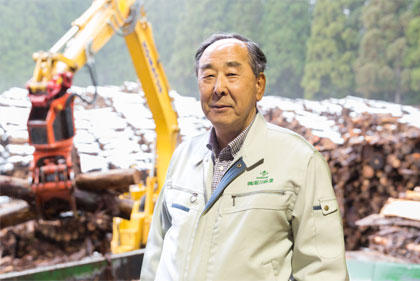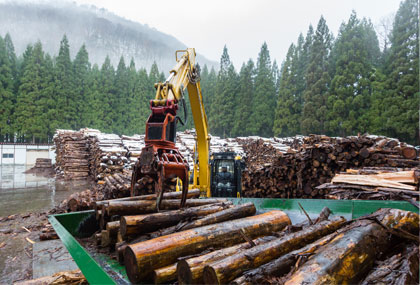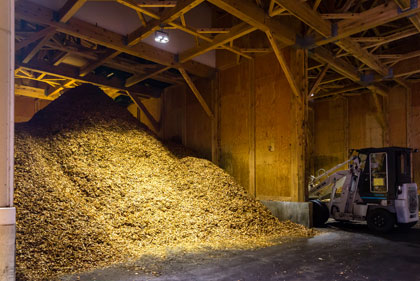-


Would you tell us about the history of your company? We heard that your father founded it.
He participated in the development of Manchuria. After the war, he managed to survive being a prisoner of war in Siberia until returning to Akita in November 1948. Just after the end of the war, job opportunities were so limited in Akita that he embarked on forestry in the spring of 1949. Around 1953, he and his friends at that time set up a business that would later evolve into a corporate entity. It began with production of materials for a large lumber company. Following the example of the forestry business in Kyushu, it began investing in machinery a little less than 30 years ago. That was a major venture. The company had financial difficulties. It was not just investing an amount equivalent to its revenue but in fact was investing several times its revenue. The introduction of machinery helped expand the business. We are very grateful for the government support for mechanization provided in those days, under which all expenses for mechanization were deductible. As for the circumstances surrounding us, there was a national policy of deliberately planting Japanese cedar trees to meet the demand for lumber in the postwar recovery period. If there had been no specific policy, broadleaf trees would have been growing in forests across the country, but cedars were chosen. They grow fast and relatively straight and their lumber were easier to process. In Akita Prefecture, it is now time to harvest the cedar trees planted at that time, which are now more than 60 years old. Today, however, despite a large forest area and a large amount of growth in the prefecture, a very limited portion can be actually harvested.
-


What is behind the limited quantity of lumber harvested from the trees you have grown?
The demand for lumber is very small in comparison with the production volume. The price of lumber is therefore so low that the revenue from lumber cannot cover the expenses involved in growing the trees. The entire difference between revenue and expenses is a loss incurred by foresters. In this situation, it is difficult to grow trees.
Did the start of the biomass power generation project make any difference?
That had the effect of increasing the yield, mainly because we supply grade C and Grade D materials for biomass power generation. The establishment of a channel for supplying low-grade wood as power generation fuel led to an increase in revenue, and it is a great help that consistent demand is secured for 20 years. In particular, the forest owners' cooperation association supplies a huge quantity of raw wood. We are discussing the possibility of returning the proceeds to foresters as the price for wood instead of making the association richer. Based on the price paid to foresters, we began calculating the cost in units of 100 yen for the first time. The mounting awareness of cost management is beneficial to the whole industry.
-


What led to your decision to invest in launching the chip factory?
Our current standing reflects major trends in the forestry industry. We took this action with a view to preserving this business for the next generation. We were under severe financial pressure. A company with net sales in the hundreds of millions of yen again made an investment of around 500 million yen. This decision is due largely to the determination of our sons, who will play a role in the next generation, to enter this business. We made a careful calculation to estimate the selling price of materials after processing them into chips, the purchase price of raw wood, and the spending to be incurred for the chip factory, to study whether or not the business was feasible. The construction of the chip factory benefited from a subsidy of just under 200 million yen from the national government. That was really a big help to us.
What actions will you be taking and what is your future outlook?
We are delighted to have secured a means of generating revenue from Grade C and Grade D materials following the start of supply of materials to the biomass power generation facility. On the other hand, we face a question about how to promote Grade A and Grade B materials. The trees for these materials have reached the cutting age. Raw wood raised in the natural environment are sorted into four grades - A, B, C and D. All of them are cut and transported from forests. Supplying these grades of wood in a balanced manner will help lower total cost. We think we need to secure a channel for the well-balanced supply of wood made in Akita, not only to users within Akita Prefecture but to those in other regions, and in other countries.
* Affiliates and titles etc. of the interviewees are current as of the time of the interview or publication.


